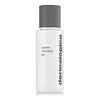What's inside
What's inside
 Key Ingredients
Key Ingredients

 Benefits
Benefits

 Concerns
Concerns

 Ingredients Side-by-side
Ingredients Side-by-side

Water
Skin ConditioningSodium C14-16 Olefin Sulfonate
CleansingSodium Lauroyl Sarcosinate
CleansingButylene Glycol
HumectantHydroxyethylcellulose
Emulsion StabilisingLavandula Angustifolia Oil
MaskingQuillaja Saponaria Bark Extract
CleansingCitrus Limon Peel Oil
MaskingMelissa Officinalis Leaf Extract
Skin ConditioningCitrus Aurantium Bergamia Fruit Oil
MaskingCymbopogon Nardus Oil
MaskingGlycerin
HumectantCocamidopropyl Betaine
CleansingSodium Cocoamphoacetate
CleansingHydroxyacetophenone
AntioxidantCocamidopropyl Hydroxysultaine
Cleansing1,2-Hexanediol
Skin ConditioningCaprylyl Glycol
EmollientPropanediol
SolventCitric Acid
BufferingO-Cymen-5-Ol
AntimicrobialDisodium EDTA
PPG-5-Ceteth-20
EmulsifyingSodium Hydroxide
BufferingSodium Benzoate
MaskingWater, Sodium C14-16 Olefin Sulfonate, Sodium Lauroyl Sarcosinate, Butylene Glycol, Hydroxyethylcellulose, Lavandula Angustifolia Oil, Quillaja Saponaria Bark Extract, Citrus Limon Peel Oil, Melissa Officinalis Leaf Extract, Citrus Aurantium Bergamia Fruit Oil, Cymbopogon Nardus Oil, Glycerin, Cocamidopropyl Betaine, Sodium Cocoamphoacetate, Hydroxyacetophenone, Cocamidopropyl Hydroxysultaine, 1,2-Hexanediol, Caprylyl Glycol, Propanediol, Citric Acid, O-Cymen-5-Ol, Disodium EDTA, PPG-5-Ceteth-20, Sodium Hydroxide, Sodium Benzoate
Water
Skin ConditioningCamellia Oleifera Seed Oil
Skin ConditioningRicinus Communis Seed Oil
MaskingPrunus Amygdalus Dulcis Oil
Skin ConditioningLactobacillus Ferment
Skin ConditioningCetearyl Alcohol
EmollientGlycerin
HumectantButyrospermum Parkii Butter
Skin ConditioningTocopherol
AntioxidantCetearyl Glucoside
EmulsifyingBeta-Sitosterol
Emulsion StabilisingRosa Damascena Flower Oil
MaskingSqualene
EmollientPelargonium Graveolens Oil
MaskingSodium Levulinate
Skin ConditioningLavandula Angustifolia Oil
MaskingLactic Acid
BufferingLitsea Cubeba Fruit Oil
MaskingSodium Stearoyl Glutamate
CleansingCitronellol
PerfumingLimonene
PerfumingGeraniol
PerfumingWater, Camellia Oleifera Seed Oil, Ricinus Communis Seed Oil, Prunus Amygdalus Dulcis Oil, Lactobacillus Ferment, Cetearyl Alcohol, Glycerin, Butyrospermum Parkii Butter, Tocopherol, Cetearyl Glucoside, Beta-Sitosterol, Rosa Damascena Flower Oil, Squalene, Pelargonium Graveolens Oil, Sodium Levulinate, Lavandula Angustifolia Oil, Lactic Acid, Litsea Cubeba Fruit Oil, Sodium Stearoyl Glutamate, Citronellol, Limonene, Geraniol
 Reviews
Reviews

Ingredients Explained
These ingredients are found in both products.
Ingredients higher up in an ingredient list are typically present in a larger amount.
Glycerin is already naturally found in your skin. It helps moisturize and protect your skin.
A study from 2016 found glycerin to be more effective as a humectant than AHAs and hyaluronic acid.
As a humectant, it helps the skin stay hydrated by pulling moisture to your skin. The low molecular weight of glycerin allows it to pull moisture into the deeper layers of your skin.
Hydrated skin improves your skin barrier; Your skin barrier helps protect against irritants and bacteria.
Glycerin has also been found to have antimicrobial and antiviral properties. Due to these properties, glycerin is often used in wound and burn treatments.
In cosmetics, glycerin is usually derived from plants such as soybean or palm. However, it can also be sourced from animals, such as tallow or animal fat.
This ingredient is organic, colorless, odorless, and non-toxic.
Glycerin is the name for this ingredient in American English. British English uses Glycerol/Glycerine.
Learn more about GlycerinLavandula Angustifolia Oil is more commonly known as lavender essential oil. It is considered a fragrancing ingredient.
Lavender imparts a famous scent. While the smell is lovely, this ingredient and may sensitize skin in topical products. This is because about 85% of the oil is made up of linalool and linalyl acetate.
When exposed to air, these two compounds become strong allergens. This ingredient exhibits cytotoxicity at low concentrations; amounts of 0.25% have been shown to damage skin cells.
A study from Japan found this ingredient caused lavender sensitivity after widespread exposure.
Lavender essential oil has some antimicrobial, antibacterial, and anti-inflammatory properties. However, the cons of this ingredient may outweight the pros.
More research is needed to confirm lavender essential oil's effects when used in aromatherapy.
Lavandula Angustifolia is known as the English Lavender and famous for creating purple fields in Provence, France.
Learn more about Lavandula Angustifolia OilWater. It's the most common cosmetic ingredient of all. You'll usually see it at the top of ingredient lists, meaning that it makes up the largest part of the product.
So why is it so popular? Water most often acts as a solvent - this means that it helps dissolve other ingredients into the formulation.
You'll also recognize water as that liquid we all need to stay alive. If you see this, drink a glass of water. Stay hydrated!
Learn more about Water